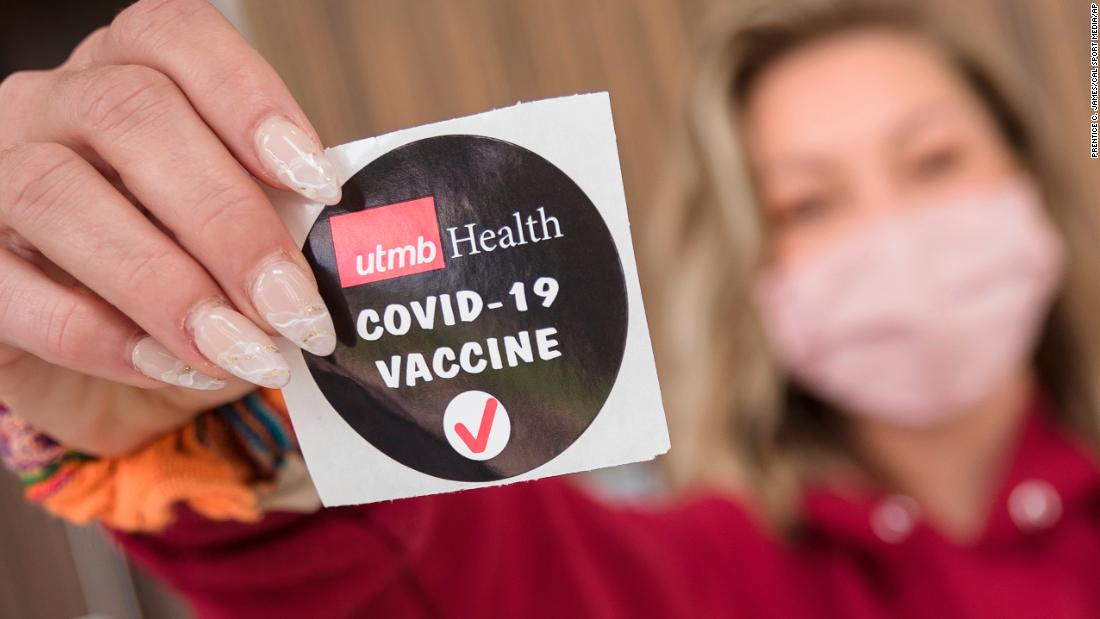
These poll results are mostly in ine with other data, such as an NBC News poll put out Sunday indicating that 65% of Americans have gotten a vaccine or will do so as soon as possible.
What's the point: The good news is that more than 50% of US adults now have received at least one dose of a Covid-19 vaccine, according to the CDC. A month ago, only about a third of adults had received one dose of a Covid-19 vaccine.
The bad news is that recent data suggests the number of people getting a shot is slowing down. This shouldn't be surprising because the vast majority of the people most eager to get vaccinated have been, at least partially. Now the challenge is to vaccinate those who are open to getting a vaccine but haven't yet.
Take a look again at the Ipsos poll. The survey indicated that somewhere between 62% and 63% of adults had or really wanted to get vaccinated. That's only about 10 points higher than the percentage of adults who are currently vaccinated.
Beyond the Ipsos and NBC News data, a Monmouth University poll released about 10 days ago showed that 65% of Americans wanted to get the vaccine as soon as it was allowed or had already received it.
As of Friday, there are more than 60 million doses that had previously been sent to the states that have not been administered. Assuming the two dose regimen that Moderna and Pfizer require to be vaccinated, this 60 million doses is about enough to cover every person who wants a vaccine immediately but has not received one.
In other words, we're either at or very close to having enough vaccines delivered to the states for every person who wants a vaccine immediately to be able to get one.
We should, therefore, be expecting the rate of vaccination to drop.
We can already see that happening. From April 16 to April 23, the number of people receiving a Covid-19 vaccine has been dropping precipitously. Making a week-to-week comparison, the number of people receiving a dose of the Covid-19 vaccine has fallen by an average of nearly 500,000 a day. The week-to-week comparisons show that the number of people getting a dose declined every day except one compared to the week before.
Focusing just on the number of first doses given (because this captures the people getting a vaccine for the first time), the pattern holds. The number of people getting a first dose has dropped every day during this period and by an average of more than 500,000 people per day compared to the week before.
This isn't to say that people aren't getting vaccinated. On average, still more than 1 million people per day are getting their first dose. This makes sense, since many people who want a first vaccine as soon as possible have not yet gotten one.
At the peak of distribution of the vaccine, however, closer to 2 million people were getting their first dose on a given day.
Thus, the big question now is whether we can get more people vaccinated than just those who really want one.
The polling suggests that about 15% of people haven't closed the door on getting a vaccine, but aren't eager to get one.
If you look at the Ipsos poll again, this includes 4% who say they'll get a vaccine a few weeks after it is made available to them, 7% who say they'll wait a few months and another 7% who say they'll get the vaccine a year or more after it's available to them. The NBC News poll was similar, with 15% saying they'll wait until the vaccine has been available for a while to see if there are any major side effects. In the Monmouth poll, 12% of the population indicated that they wanted to see how the vaccine treatment went for other people before getting one.
This vaccine hesitant group has been declining as a percentage of the population over time. While they made up 18% of adults in this past Ipsos survey, they were 24% in the beginning of March, 30% in the beginning of February and 38% in the beginning of January.
The drop in this vaccine hesitant group has correlated almost perfectly with a rise in the percentage of people getting the vaccine or wanting to get the vaccine as soon as possible.
As I've noted before, many in the hesitant camp just want to know that the vaccine works and is safe. The more people they know who have safely gotten vaccinated, the better chance they'll get the vaccine.
Unlike before however, we're now getting to the point where the rate of distribution of the vaccine is vastly outrunning the size of the vaccine resistant group.
The people who are left in the vaccine hesitant group have resisted getting the vaccine up to this point. Getting them vaccinated will likely not be as easy.
Still, they're the last big chunk of adults who have not been vaccinated and have a decent chance of being convinced. They're not like the 20% of the population who have consistently been vaccine resistant and said they won't get the vaccine
Polling shows the vaccine hesitant population will need to be reminded that the benefits greatly outweigh the risks and the chance of a major side effect is small.
If we don't have to figure out how to get these folks vaccinated, we're going to start running out of adult arms to vaccinate soon.
"want" - Google News
April 25, 2021 at 11:08PM
https://ift.tt/2QmSCmL
Most Americans who want a Covid-19 shot have gotten one. Now comes the hard part - CNN
"want" - Google News
https://ift.tt/31yeVa2
https://ift.tt/2YsHiXz
Bagikan Berita Ini















0 Response to "Most Americans who want a Covid-19 shot have gotten one. Now comes the hard part - CNN"
Post a Comment